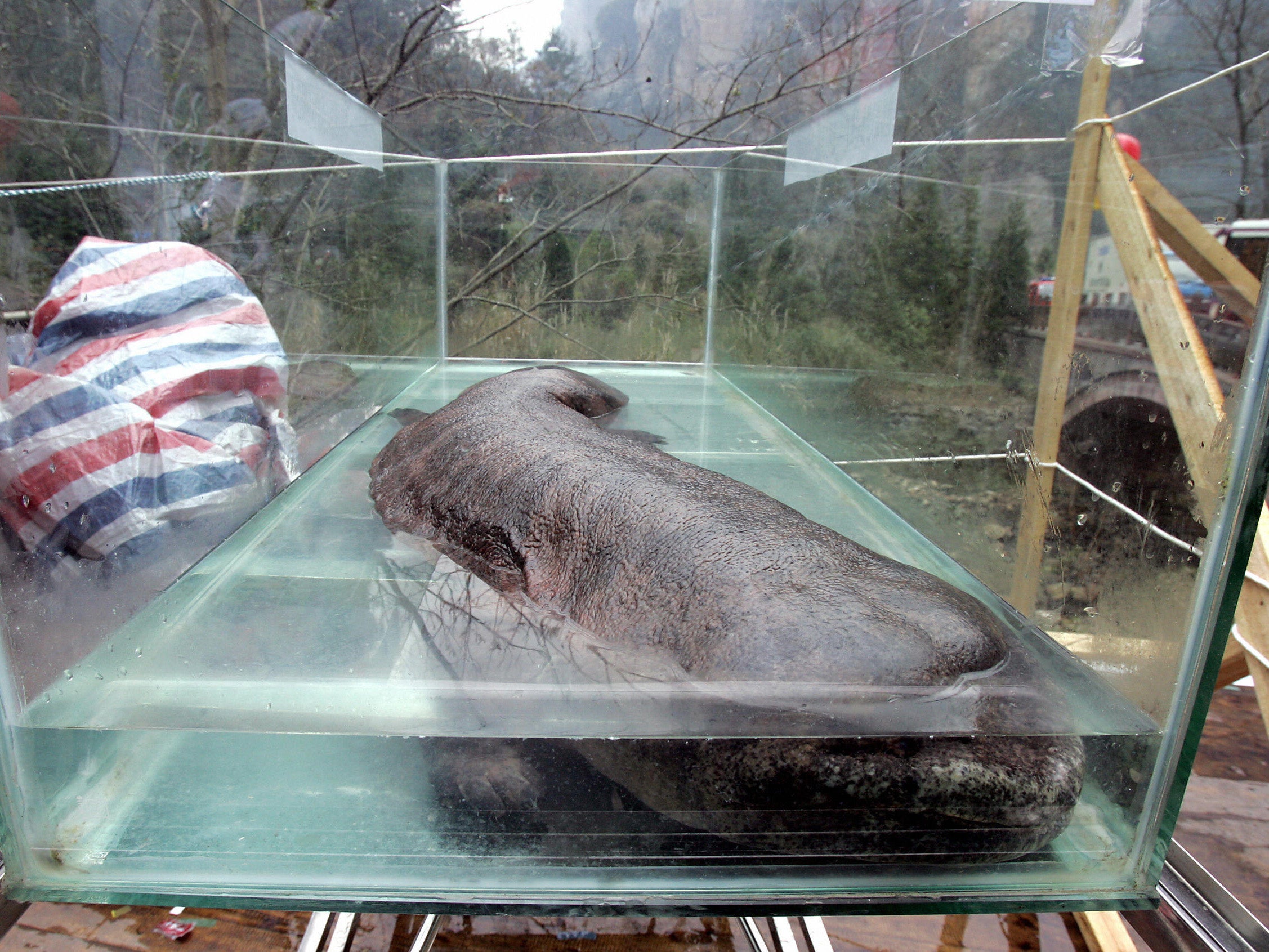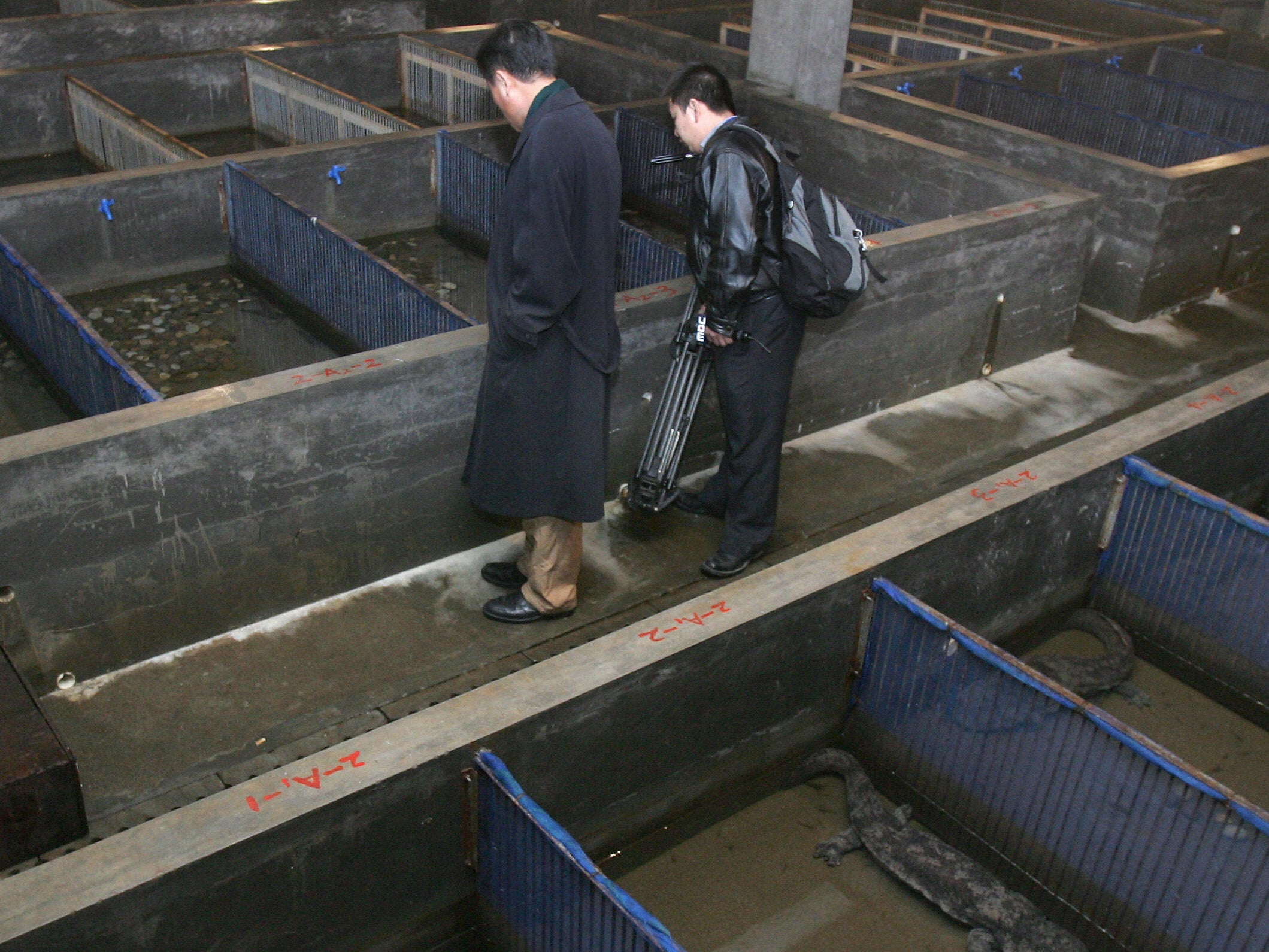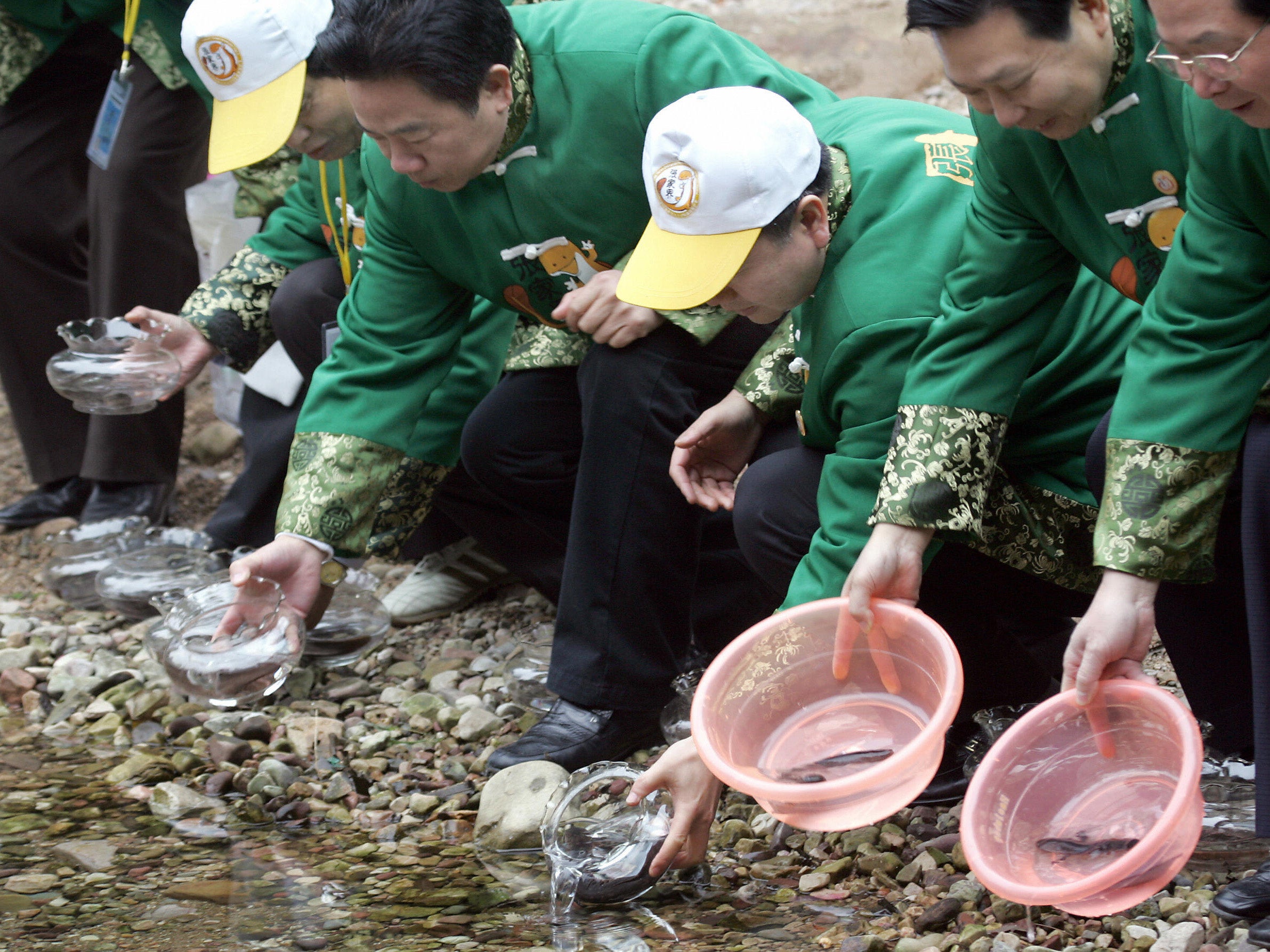Millions of Chinese giant salamanders are bred in captivity, but they are heading towards extinction in the wild
Authorities hoped that releasing farm breeds into the wild could rectify the problem – however, the solution is proving far from simple

Your support helps us to tell the story
From reproductive rights to climate change to Big Tech, The Independent is on the ground when the story is developing. Whether it's investigating the financials of Elon Musk's pro-Trump PAC or producing our latest documentary, 'The A Word', which shines a light on the American women fighting for reproductive rights, we know how important it is to parse out the facts from the messaging.
At such a critical moment in US history, we need reporters on the ground. Your donation allows us to keep sending journalists to speak to both sides of the story.
The Independent is trusted by Americans across the entire political spectrum. And unlike many other quality news outlets, we choose not to lock Americans out of our reporting and analysis with paywalls. We believe quality journalism should be available to everyone, paid for by those who can afford it.
Your support makes all the difference.The Chinese giant salamander, the world’s largest amphibian and a critically endangered species, has quietly slipped towards extinction in nature.
After an exhaustive, years-long search, researchers recently reported that they were unable to find any wild-born individuals.
“When we started the survey, we were sure we’d at least find several salamanders,” says Samuel Turvey, the lead author and a senior research fellow at the Zoological Society of London.
“It’s only now that we’ve finished that we realise the actual severity of the situation.”
Millions of giant salamanders live on farms scattered throughout China, where the animals are bred for their meat. But another study by Turvey and his colleagues shows that reintroducing farmed animals is not a simple solution for saving the species in the wild.
In the wild, Chinese giant salamanders were not just one species but at least five, and perhaps as many as eight. On farms, they are being muddled into a single hybridised population adapted to no particular environment.

“The farms are driving the extinction of most of the species by homogenising them,” says Robert Murphy, a co-author and senior curator of herpetology at the Royal Ontario Museum in Canada. “We’re losing genetic diversity and adaptations that have been evolving for millions of years.”
As with so many other protected species in China, poaching is the main threat to giant salamanders, which can weigh up to 60kg. Unlike pangolins, tigers and rhinos, however, salamanders were never valued as meat, trophies or medicine.
That changed in the mid-20th century, when famine forced people to turn to alternative food sources. By the 1990s, giant salamander meat had been rebranded as a luxury food item in China, and government-subsidised salamander farms began popping up around the country.
As prices for live animals skyrocketed, captive populations grew and wild ones plummeted. “The development of this industry led to huge amounts of increased pressure on salamanders, which were poached from the wild to stock these farms,” Turvey says.
Realising the amphibians were disappearing in nature, officials decided to restock wild populations by releasing captive-born salamanders.
But what seemed like a good conservation strategy led to a number of new problems, Turvey says.
Not recognising that salamanders from different parts of the country were distinct species, farmers had inadvertently created hybrids – a fact that the researchers confirmed through genetic analysis of more than 1,000 captive amphibians.
“When we looked at farmed animals, we found a large mixture of different genetic components, like a witch’s cauldron,” says Jing Che, a herpetologist at the Kunming Institute of Zoology in China and co-author of both recent studies.
No system was ever put in place to prevent hybrids from release into the wild, nor to ensure that reintroduced animals were matched with their geographic origins.
“These hybrids may create a big mess by changing the genetic makeup of locally adapted wild animals,” Jing says.
In 2009, Murphy and his colleagues raised these concerns at a government meeting but were dismissed. “They just said it wasn’t an issue,” he says.
At least 72,000 captive-bred salamanders have been released since then.
In 2013, Turvey and his colleagues organised a nationwide giant salamander search – apparently the largest wildlife survey ever conducted in China.

They spent three years scanning riverbeds and turning over rocks at 97 sites in 16 provinces. They found giant salamanders at just four sites.
All of the animals had genetic profiles that did not match the places in which they were living, indicating they probably originated on farms.
The researchers also interviewed nearly 3,000 local people, about half of whom said they had seen giant salamanders in the wild. The most recent sightings they could recall took place, on average, 18 years ago.
“There could be remnant populations of genuine salamanders scattered here and there, but they are effectively impossible for any researchers to find now,” Turvey says.
Taking this into consideration, the best strategy for preventing extinction in the wild, he adds, is to rescue genetically pure animals from farms, and then undertake carefully controlled conservation breeding to rebuild each species’ numbers.
“If we wait too long, all those wild-caught individuals will be gone,” he says.
Releases of giant salamanders without knowing their genetic makeup should stop immediately, Jing adds. But that cannot happen without buy-in from Chinese authorities.
“We have a responsibility to do conservation based on scientific knowledge,” she says.
© New York Times
Join our commenting forum
Join thought-provoking conversations, follow other Independent readers and see their replies
Comments